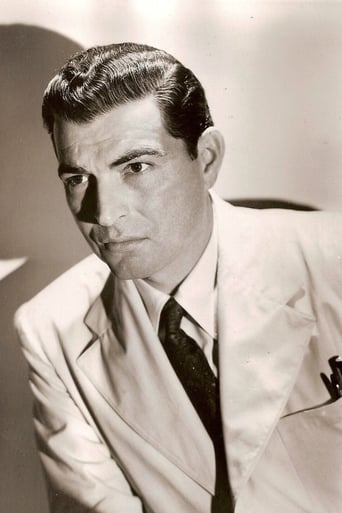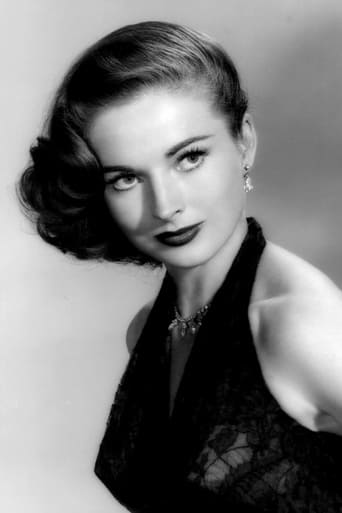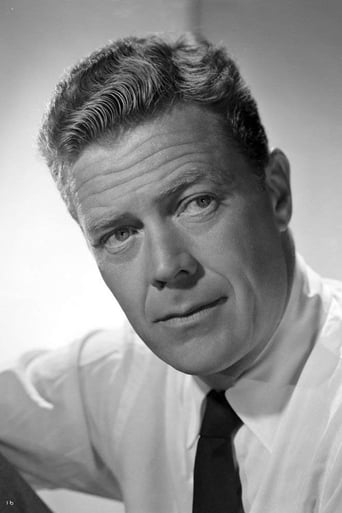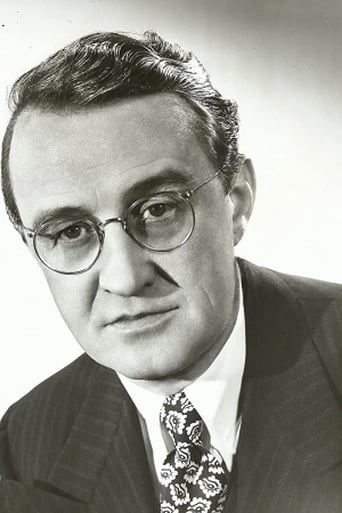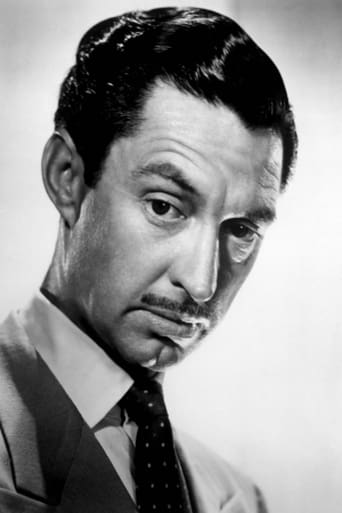Listonixio
Fresh and Exciting
Reptileenbu
Did you people see the same film I saw?
Tacticalin
An absolute waste of money
TaryBiggBall
It was OK. I don't see why everyone loves it so much. It wasn't very smart or deep or well-directed.
derekcreedon
During Stanley Baker's elaborate tissue of distortions and downright untruths the defenders at Rorke's Drift break into Men of Harlech as a riposte to their war-chanting opponents despite the fact that they were still an English regiment at the time and the concert never took place anyway. And they sing the song in English, not for the Zulus' benefit presumably but as maybe a concession to the film's American backers. The director Cy Endfield had been an old Hollywood hand until he was blacklisted and it's tempting to wonder if he lifted the idea from an identical scene in what proved to be Val Lewton's final production before an untimely death. I've no idea how true to history is the siege of Spanish Boot by the Mescalero Apaches but the presence of Welsh silver-miners among the population - and they were active in New Mexico and elsewhere - no doubt reflected Lewton's interest in ethnic cultures and traditions. And when the time comes they let rip with Harlech in Welsh which, for a Hollywood movie of its day, is doubly pleasing.Yet another regime-change at RKO had left Lewton out on a limb after his initial run of success and he drifted unhappily between uncongenial assignments at Paramount and MGM before fetching up at little Universal whose budget-restrictions and thematic preferences he found more accommodating. And for the first time he could use Technicolor though the film commences on a dark interior before a door opens onto the outside world (maybe John Ford had been watching it too). Lewton and director Fregonese craft a sturdy morality-tale about an anti-hero who makes good in face of various forms of prejudice. Gambler Sam Leeds (Stephen McNally) kills a man in self-defence but is sent packing as an 'undesirable' along with the local "dance-hall hostesses" whom he later finds massacred after an Indian attack. A notable Lewton touch involves their dying piano-player (Clarence Muse), his scalping concealed under his derby-hat. (Lewton made a point of using black players in impressive cameos e.g. the vivacious Theresa Harris in I WALKED WITH A ZOMBIE and the little page-boy in BEDLAM.) Sam returns to warn the town but is disbelieved until the stagecoach comes back bristling with arrows. A young townsman rides for help but is found mutilated down a well, polluting the water-supply. Sam leads an expedition for replenishments and the hellfire preacher (Arthur Shields) who had spoken against him comes to his aid when the party is attacked. (Shields virtually reprises his role from HOW GREEN WAS MY VALLEY, the Welsh and the Irish usually interchangeable in matters of casting.) The chief Victorio is wounded and the Apaches withdraw for the time being. Back in Spanish Boot Sam is arrested for having given a beer to Pedro-Peter,the cavalry-scout(Armando Silvestre) during the waterless interim and is handcuffed to the bar-rail in the saloon. The town's mayor Joe Madden(Willard Parker) who's also the blacksmith and horse-doctor has an ulterior motive. Both men are rivals for Sally (Coleen Gray) the boarding-house keeper who's torn between love and security. But when the town is finally attacked in force she helps Sam get free and everyone takes refuge inside the church. The Apaches call for aid for their dying chief and Joe elects to go out to them but when Victorio dies they kill him. When night falls the "ghost dancers" - young painted braves deliberately sacrificing themselves for immortality - launch an assault on the defenders through the high windows in a wonderfully-lit and eerie sequence, the miners do their battle-song (one of them is actor and singer Sheb Wooley, later to add to Gary Cooper's woes in HIGH NOON) and the bigoted Reverend finds accord with Pedro-Peter as they pray together to their Great Spirit. As both sides fight fire with fire in the blazing finale the Cavalry arrive in a briskly minimalist wrap-up, Sam and Sally lead the congregation into safety and a pet donkey's newborn foal runs to its mother for milk. Solid and atmospheric with fine leads and an intriguing blend of the familiar and the unusual it rightly pleased Universal who wanted to keep Lewton on board but he decided to accept an offer to join Stanley Kramer. Sadly fate intervened and he never saw the release of his swansong.
Marlburian
This is an enjoyable Western that moves along well enough, with three "suspenseful" sequences: Sam's unarmed ride through the desert, the townsmen's mission for water, and the church siege.Stephen McNally does fine in the lead, but another underrated actor, James Griffith, seemed miscast as the army officer - he was more suited to enigmatic or semi-sinister roles. Armando Silvestre makes an impressive and dignified Indian scout.The version I saw on British TV seemed to have been edited, because the "Variety" review mentions Sam distracting the frightened children with sleight-of-hand, and the kids singing "Oranges and Lemons"; had these scenes been included in the version I saw, I suspect I might have winced at their sentimentality but they would have added depth to Sam's character.The saloon girls evicted from Spanish Boot were the usual highly- glamourised girls that Hollywood used to depict in preference to the drabs they must have been to have worked in what looked quite a dump of a town.And there was a new take on my usual query about what happens to the bodies of felled Indians that mysteriously disappear between charges that follow closely on one another in attacks on forts and wagon trains. The defenders must have killed a dozen Indians jumping through the church windows (conveniently announcing their presence by screaming), and if the siege had gone on much longer their out-of-sight corpses would have begun to smell.Another commentator has referred to the concluding "cutesy shot of a little donkey trotting up to its mother. It's so weirdly sudden after all the long drawn out, moody, tense, heightened tension that preceded it that it completely whips the metaphorical carpet out from underneath you." In fact I saw this as a symbol of regeneration, that the town would be rebuilt and grow up, as Mayor Maddden indicated it would when the Apaches were burning the buildings.
ctrosie
While not one of the greatest westerns to ever be brought to the screen, this movie does bring something else that others seemed to fail at, and that is actual human feelings and and what they went through in times of turmoil such as this film suggests. The townsfolk have to hold up in a church while outside they are attacked by Indians. In the movie it shows how the people would have and must have felt. The ending also leaves the viewer feeling pretty good. For not a very popular movie as say a John Wayne movie, this movie is actually quite good. It has yet to be released on DVD or VHS and i seriously doubt that it even has a chance yet if it was i strongly suggest western fans to grab a copy of it and see what I'm really talking about. As for those who want to see it now, your best bet is probably to try to catch it on the Western Channel although i have bee watching the channel for a few years and have yet to see it on there. The only time i ever saw it on television was on AMC, back when they had no commercials and actually played what the channel suggested, Classics.
Brian Camp
APACHE DRUMS (1951) is a routine western about Apaches on the warpath attacking isolated townsfolk in Arizona in 1880. A fairly low-budget film in color from Universal Pictures, it's something of a disappointment considering it was the final production of Val Lewton, the celebrated RKO producer who'd revolutionized the horror genre in the early-to-mid-1940s with such releases as CAT PEOPLE, I WALKED WITH A ZOMBIE and THE BODY SNATCHER. While there are some interesting atmospheric touches and dramatic moments, the film is ultimately undone by a talky script that fails to generate much suspense. It focuses on a group of disparate characters in the town of Spanish Boot, with Sam Leeds (Stephen McNally), an itinerant gambler, emerging as the hero when, after being evicted from town by the upright blacksmith/mayor, Joe Madden (Willard Parker), he returns to warn them of the impending Apache attack. When the Apaches launch their big assault, all the townsfolk, including a contingent of Welsh miners, and a few soldiers hole up in the thick-walled adobe church and try to fend off entrance by Indians through the high windows. From the moment of the doors being locked, the entire remainder of the film (about 25 minutes) is from the point-of-view inside the church. Such a situation lends itself to great tension and there are some harrowing moments as the defenders stumble about in darkness and scramble for candles so they can see the Indians when they attack. Some of the fighting from this point is frenzied hand-to-hand combat in semi-darkness. One stirring moment comes when the townsfolk, frightened and intimidated by the strains of the Apaches' war song, decide to respond with a Welsh fighting song of their own. The suspense is undercut, however, by frequent lulls in the action, with too much talk and a pointless love triangle involving Sam, Joe and Sally (Coleen Gray), the young woman who runs the local boardinghouse for the Welsh miners. The Indians also spend far too little time fighting. They bring their drums with them and launch into a whole drumming-and-chanting number before the attack on the church, something I've never heard Apaches do in a western before (or since) and something I don't think Cochise or Geronimo, to name two famous Apaches, would have considered during their frequent skirmishes with the white man. (They might have sung a war song back at camp, but not during the actual battle!) At one jaw-dropping, head-shaking moment, the Apaches even stop the fighting to ask the whites if they've got a doctor to tend to their wounded leader, Victorio, promising to retreat if the doctor successfully patches him up. Again, this is something I've never seen the Apaches do in a western before. The cast is peppered with a number of fine character actors. The leading man, Stephen McNally, was quite busy in westerns in the postwar era, most memorably as a villain (WINCHESTER '73). Coleen Gray specialized in westerns and film noir (RED RIVER, KISS OF DEATH, THE KILLING). Underrated western actor James Griffith plays a philosophical army lieutenant who understands and respects the Apaches. Irish actor Arthur Shields plays a zealous Welsh minister who scorns the gamblers and drives the dance hall girls out of town, but winds up picking up a gun to fight alongside Sam during one battle. Mexican actor Armando Silvestre plays an Apache army scout who has to prove himself to the whites when the Apaches attack. Clarence Muse appears briefly as an employee of the dance hall troupe. Argentine director Hugo Fregonese did several more films in Hollywood, including the excellent Civil War adventure, THE RAID (1954), before heading to Argentina and Europe to continue his career.

